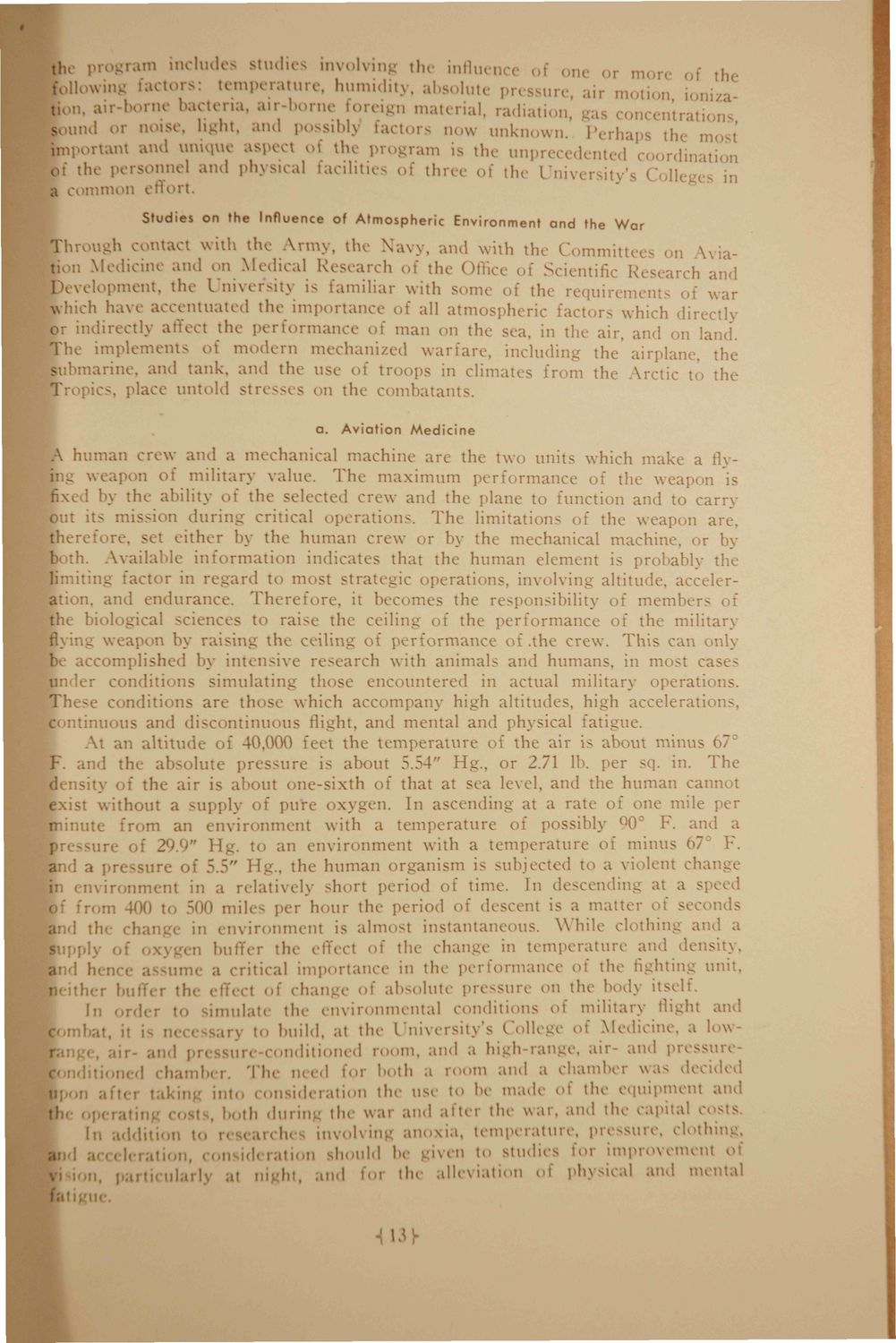| |
| |
Caption: Dedication - Justification and Planning for Willard Airport (1942)
This is a reduced-resolution page image for fast online browsing.

EXTRACTED TEXT FROM PAGE:
# a common el rt. Studies on the Influence of Atmospheric Environment and the W a r 1 1 Through contact with the Army, the Navy, and with the Committe n Aviation Medicin and on Medical Research of the Office of Scientific Research and Development, the University is familiar with some i E the requirements of war which have accentuated the importance of all atmospheric facto; which directly r indirectly affect the performance of man on the sea, in the air, and on land. The implements oi modern mechanized warfare, including the airplane, the ubmarine, and tank, and the use oi troops in climates from the Arctic to the Tropics, place untold stresses on the combatants. a. Aviation Medicine \ human crew and a mechanical machine are the two units which make a flyg weapon of military value. The maximum p< formance of the weapon is fixed by tin ibility oi the selected crew and the plane to function and to carry out it^ mission during critical operations. The limitations of the weapon are. there fere, set either by the human crew or by the mechanical machine, or by th. Available information indicates that the human element is probably the limiting factor in regard to most strategic operations, involving altitude, acceleration, and endurance. Therefore, it becomes the responsibility of members the biological sciences to raise the ceiling of the performance of the military flying weapon by raising the ceiling oi performance of .the crew. This can onh ccomplished by intensive research with animals and humans, in m st cas^ s un r conditions simulating those encountered in actual military operations. Th< i conditions are those which accompany high altitudes, high accele itions, c ntinuous and discontinuous flight, and mental and physical fatigue. > At an altitude of 40,000 feet the temperature oi the air is about minus 67 F. aid the absolute pressure is about 5 54" H . or 2.71 lb. per sq. in. The densit) :' the air is about one-sixth oi that at sea level, and the human cannot exist without a supply of pure oxygen. In ascending at a rate of one mile per minut - m an environment with a temperature of possibly 90° F. and a ire of 29.9" \\^. to an environment with a temperature oi minus 67° F. and a pre ure of 5" Hg., the human organism is subjected to a violent chang. I environment in a relatively short period of time. In descending at a speed m 400 t i0 mill per hour the period oi descent is a matter oi s^ >nds and the chai in environment is aim -t instantaneous. While clothing and a apply ii buffer the effect of the change in temperature and density, and h<n< a critical importance in the performance oi the fighting unit neither buffer the ef; t of change of absolute pressure on the body itself. In to simulate the environmental conditions oi military flight and ml t, it i n < rai m and pr< n r |jti build, at the University's College oi Medicin< . lowmditioned room, and a high-range, air- and pressureTh, need for both a room and a chamber was decided the war and alter the war. and the capital COStS both duril hamb •in: u ,n tl km- into consideration the use to be made- i^i the equipment and irch( involving anoxia, temperature, pressui thin ition should b. iven to studit for improvement of I ni^ht, and foi the alleviat » of physical and mental n I,, addi to r,d ;, Hon, n, pari ularl -113 V
| |